How to Sing Low Notes: 5 Exercises to Sing REALLY Low
Can I level with you guys for a minute?
The topic we’re covering today—how to sing low notes—is painfully near and dear to my heart.
Why?
Well, as you may know, tenor is the highest male voice type.
And I’m a super high tenor!
Actually, when I first started singing low notes, hitting low notes felt sort of like scraping the very bottom of my voice.
I mean, it was hard!
But however hard low notes can be, knowing how to sing low notes properly is crucial to expanding your vocal range.
And the ability to expand vocal range upwards and downwards is a crucial part of singing more generally.
Today we’ll talk about where low notes come from, how to low notes louder, and (most importantly) how to sound great singing them.
Then we’ll go over 5 of my favorite exercises to practice hitting low notes with a full and rich sound.
So, if you’re wondering how to sing low notes with power and confidence, or how to sing low notes without straining, you’ve come to the right place.
By the way, if you’d prefer a video to walk you through all of the exercises on hitting low notes check this out:
Where Do Low Notes Come From?

But to really understand low notes in music and what makes them a bit difficult to sing well, let’s briefly discuss the vocal cords.
Low notes occur when your vocal cords are vibrating slowly.
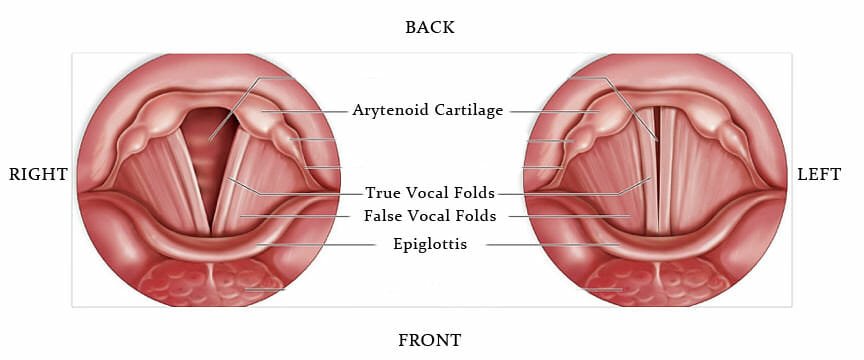
When do vocal cords vibrate slowly? When they are thick and slack.
As you can see here, vocal cords make themselves thicker or thinner depending on what sound you want to vocalize.
They also slacken themselves, which just means that they are not as tight as usual.
If you’ve ever had laryngitis, you may have noticed your voice getting lower over the course of several days.
I know I did when I had it!
This happens because your vocal cords get filled with water and become thick and slack as a result.
In fact, here’s a funny video of me as I contracted laryngitis over three days. Notice how every day, my voice got deeper and deeper.
In fact, after a while, I started to feel like I could only sing low notes!
That’s because as my vocal cords filled with fluid (called “edema” in medical terms), the cords vibrated more slowly. This resulted in a lower pitch.
Cool, huh?
You can see this same thing on any stringed instrument.
Check out the low E string on a guitar, or crack open a piano and look at the strings on the left side of the keyboard.
You’ll see that the thicker strings always make lower notes.
For those curious about terminology, low notes are called the fundamental frequency or lowest pitch in music theory. These notes typically fall in what singers refer to as their chest voice range.
Alternatively, try stretching and plucking a rubber band and you’ll instantly see that its pitch goes up when it’s stretched thin and tight.
There’s actually a cool little mathematical formula for the vibration of a string.
We don’t need to get into that right now, but basically the thinner and tighter a string is, the faster it vibrates.
The faster it vibrates, the higher the pitch becomes.
So, on the flip side, thicker, and slacker strings (or vocal cords) produce low notes.
What Is the Lowest Note Ever Sung?
Fun fact: what is the lowest note ever sung?
The American singer Tim Storms holds the record for the lowest note sung by a human: a positively subterranean G(−7).

I mean, look at that! That note looks like it’s trying to dig its way to China.
My point here is that the human voice has a huge range, and different singers have different abilities and strengths.
No one in their right mind would try to match Tim Storm, but what we can do is understand our personal vocal ranges and learn how to hit low notes that we couldn’t before.
Speaking of which…
Can You Learn To Sing Low Notes?

Here are some common questions I get from students when discussing low notes:
Why can’t I sing low notes? Is it something you have to be born with?
If not, how can I train my voice to sing lower? Can you train your voice to sing deeper and how can I improve my low notes?
What about how to sing low notes as a female singer? How do girls sing low notes?
All excellent questions! Here’s the deal:
While it’s true that you can learn to sing lower notes, most of the time I encourage my students to focus on trying to hit higher notes instead.
That’s because it’s so much more important in today’s music to learn to hit high notes without falsetto, rather than just croaking out a few lower notes in vocal fry.
But you may be wondering if YOU can learn to sing lower notes.
Here’s the answer:
Yes!
Thanks everyone! That concludes today’s lesson (kidding).
Okay, the real answer here is: yes, to a point.
Let’s think about a guitar string again.
Even on a bass guitar, you can hit high notes by tightening the string and playing at the really high frets.
So long as the string doesn’t break, you can make it tighter and tighter and reach as high a pitch as you want.
Likewise, singers can practice stretching their vocal cords and add a little bit more to their high notes.
All singers have a limit, obviously, but they can keep pushing that limit by thinning and tightening their vocal cords just a bit more every day.
But with low notes?
Nah, sorry. Doesn’t work that way.
The lower end of your vocal range is limited. There’s a physical limit to how thick and slack your vocal cords can get.
Again, it’s like a string.
You can loosen a guitar string and lower the pitch to a point, but eventually it can’t get any slacker. The pitch won’t go any lower.
In the same way, human vocal cords can only go so low and still sound “normal”.
Once you get below a certain point, the vocal cords just relax completely and air bubbles through creating a croaky sound known as “vocal fry”.
Don’t get me wrong: it’s still super important to practice your lower notes!
Tons of songs use low notes and you need to be able to hit them when they come up.
Now, as you might expect, learning how to sing low notes for male singers is a different ordeal than for female singers. Males tend to have lower voices and don’t need to strain as hard to hit those low notes.
But regardless of who you are, don’t ever think that you can’t sing low notes!
Even learning to lower your voice a little is a major accomplishment.
So today’s lesson is all about looking at those lower notes in your voice and making the best of what you have.
Trust me, as someone who has struggled with low notes in the past, I can tell you that they’re well worth the effort!
Before we jump into the exercises, I do want to warn you against the most common problem singers have with low notes.
Here’s what you need to know:
The #1 Mistake Singers Make with Low Notes:
Many singers ask me “Why do I struggle to sing low notes?” The answer often comes down to technique rather than natural ability.
While anyone can sing low notes to some degree, the key is understanding how to access them properly.
What makes you sing lower isn’t just about forcing your voice down – it’s about proper breath support, larynx position, and resonance.
For female singers wondering how to sing low notes as a girl, or sopranos asking how to sing low notes in head voice, the technique is similar to male singers but requires special attention to maintaining proper resonance without pushing the voice too low.
I see this one big mistake more than anything else when teaching low notes.
People want to drop their larynx.
In case you’re not familiar, the larynx is the hollow muscular organ in your throat where your vocal cords are located.
It’s also known as your “voice box” or your “Adam’s apple”.
You can raise and lower your larynx using your neck muscles. Whenever you yawn, for example, your larynx will be pushed down a little.
Now, lots of beginning singers want to raise their larynx for high notes and drop it for low notes.
Some people try to sing low notes by pushing their entire larynx way down towards their windpipe.
They end up sounding really funny, kind of dopey, like Yogi Bear or Goofy.
Don’t make this mistake! If you’ve ever wondered “why do I sound bad when I sing low?” this is probably the reason!

But one thing is for sure: dropping your larynx to hit low notes makes them sound weird.
In other words, it doesn’t sound like your normal voice.
Here’s why that is:
When the larynx goes that low, the vocal cords actually start to loosen and come apart.
A lot of extra breath starts flowing through your larynx, and the notes lose a lot of vocal tone.
We all know that breathing for singing is super important, but when your larynx gets pushed down that far, it’s too much of a good thing.
So our goal today is to learn how to sing low bass notes and hit those low notes without descending into cartoon-dog territory.
We’ll practice singing from high to low in our regular voice, with a full, beautiful, and rich tone on every note.
The name of the game is to keep your larynx balanced and resting in a comfortable position, without pushing it too low or high.
My 5 Favorite Exercises
Whether you’re looking for tips on how to sing low notes female techniques, how to sing low notes as a soprano, or how to sing low notes male approaches, these exercises will help you develop a stronger lower range easily and naturally. While you can train your voice to be lower through consistent practice, it’s important to work within your natural range while gradually expanding it.

So, with all that said, how do I lower my vocal range and learn how to sing low notes well?
These exercises are all geared towards helping you sing low notes while resisting the temptation to drop your larynx.
We’re going to learn how to sing low notes for guys and girls alike by expanding your vocal range and working within—not against—your natural abilities.
1. “Speak” the Low Notes

This first exercise is more of a mental shift than anything else, but it’s still a great way to start practicing low notes.
Here’s what I want you to try:
Rather than ‘singing’ your low notes, try to ‘speak’ them.
Huh?
Well, most people have a singing voice that is different from their speaking voice.
The singing voice is prettier, more songful, uses more vibrato, and is more musical in general.
This makes sense. Normally, when we sing, we want to make our notes sound pretty, right?
The problem is that focusing on that pretty and songful quality causes you to lose tone at the lower notes.
So instead, when you’re first trying to sing those lower notes try to “sing” with your speaking voice!
1. Forget about the musicality of your notes for a second.
2. Try to ‘speak’ notes on pitch.
3. Ideally, you’ll notice that when you “speak-sing” the notes a bit more, the notes are much easier.
Even if it’s not as “pretty” as your singing voice, this “speakiness” in those low notes will help you access lower notes than you thought possible.
To test this out, you might start from the 5th of a scale and descend to the tonic while speaking the long “e” syllable on each note.
It would go something like this:

“EE, EE, EE, EE, EEEEE.”
That will probably sound weird, a little ugly, and, well, not like real singing.
And that’s the point.
Want to Nail Those High Notes?
Every singer wants to expand their range. Expand Your Range Fast will show you how to finally hit high notes in your voice without straining. Expand your range by 5 notes or more!
By focusing on the low notes and not how pretty those notes sound, you will maintain a rich tone and avoid that weak and breathy sound that comes from dropping your larynx.
Remember, learning how to sing better isn’t just about making pretty sounds – it’s about developing proper technique that allows you to access your full range comfortably.
With practice, you’ll find that speaking your low notes actually helps improve your overall vocal control.
Please see my video for more explanation on singing versus speaking notes:
Speaking of the larynx…
2. Watch Your Larynx
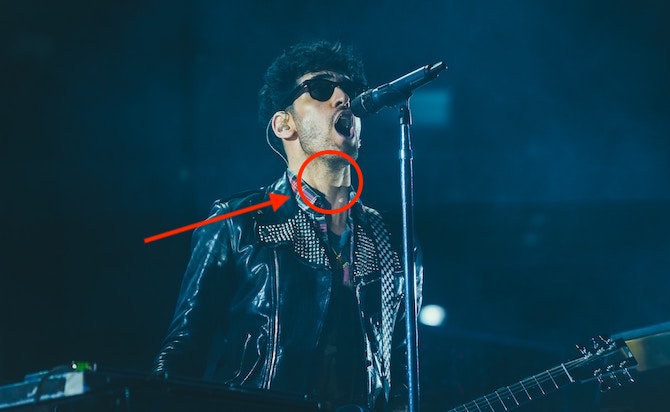
In our second exercise, the goal is simple: try to be more aware of what your larynx is doing.
There are two main ways to do this.
You can:
1. Watch your larynx in the mirror as you sing or…
2. Feel your larynx by gently pressing your thumb and index finger up against your neck, just past your chin.

Both of these tricks will allow you to see and feel your larynx move as you shift from low to high notes.
Remember, the big mistake everyone makes is letting their larynx drop when they try to reach the low notes.
But the goal is to keep the larynx balanced.
It will always move a little bit, but resist the temptation to push your larynx too far down (or up, when doing high notes).
If you feel yourself pushing it too far, keep it easy, keep it in your ‘speaking voice’, and just allow the low notes to come in naturally.
Feel free to check out this video on for more info on watching your larynx and singing without straining:
3. The 5-Tone Descending “ee”

Now that you understand a couple ways of hitting low notes better, let’s do some vocal exercises to get you even further down there.
In the third exercise, we’re going to sing a 5-Tone scale where you come down or “descend” from the top note down to the bottom note.
1. Start from the 5th of the major scale.
2. Sing with the long “ee” vowel, in your speaking voice, like we discussed in exercise 1.
3. Singing “ee” for every note, walk down to the 1.
4. As you do, watch and feel your larynx and don’t let it drop too far.
In solfege, this would be:
Sol, Fa, Mi, Re, Do.
In sheet music, it would look like this:

Why “ee”, you ask?
Well, a lot of other vowels like “Ah” and “Uh”—the open or ‘chesty’ vowels, as some people call them—tend to cause our larynx to drop when singing low notes.
Seriously, try it: hold your fingers to your larynx and try switching from an “ee” to an “Ah” vowel while holding the same low note.
You should feel your larynx descend a little bit on the “Ah” vowel, even though the pitch is the same for both vowels.
Quick side comment: when discussing how to sing low notes, chest voice and head voice are terms that come up a lot.
While open vowels like “Ah” or “Uh” use more chest voice and seem like the logical choice for low notes, the closed vowels like “ee” are actually much better for keeping your larynx balanced.
So, sing the five descending notes of the scale and make sure not to start too high.
Our goal is to walk down to low notes, so pick a starting note such that the 1 of the scale is at the low end of your range.
Do this several times in a row.
You might notice that this exercise is quite a workout!
After the first couple times, your voice might be getting a little tired.
But, even though it might be getting tough, resist the urge to push with a lot of volume or let your larynx drop.
Just keep your voice relaxed and your larynx balanced, maintain vocal control, and slowly walk down to the low notes every time.
This exercise is kind of like vocal yoga: it’s a real workout, but your focus should be on balance and control, not brute strength.
Like any workout, the more you do it, the easier it becomes!
4. The 5-Tone Descending “ooh”

We’re going to do the exact same thing as in exercise 3, but this time with an “ooh” vowel.
Again, why “ooh” rather than another vowel like “Oh” or “Eh”?
Because the resonance for an “ooh” vowel is much lower than the slightly more open vowels.
This allows you to sing a bit lower than the other vowels will.
Here’s how you do it:
1. Start from the 5th note of a scale.
2. Using “ooh”, walk down to the 1.
3. Like before, watch and feel your larynx and don’t let it drop too far.
After “ee”, “ooh” is the narrowest vowel we typically use as English speakers.
And just like “ee”, “ooh” is great for singing low notes with a full vocal tone and avoiding that dull, dopey quality we talked about earlier.
Again, try to ‘speak’ the “ooh” instead of ‘singing’ it.
This exercise gets tough for me after a couple of rounds!
But it really is a fantastic way to practice hitting those low notes with a full and rich tone, all while balancing your larynx.
Stay relaxed, speak the “ooh”, and don’t push too hard.
Remember, it’s vocal yoga: you want balance, control, and tone.
Brute force is not the answer.
Please check out this video below for an explanation of how using the correct vowels can help you avoid strain:
5. Sing Songs with Low Notes

Hey, great job everyone!
If you’ve made it this far, you may have been wondering something:
“Practicing low notes with closed vowels and our ‘speaking voice’ is great and all, but the point is to sing, right?”
And you’d be right!
So, in this last exercise, we’re going to actually sing low notes in a real song.
But this is exactly where most singers go wrong.
You can do vocal exercises all day to get to those lower notes. But when singing a song, so many singers will go back to their old habits for hitting lower notes.
Sure, you may be able to do it on an “ee” and “ooh” vowel beautifully, but when you sing a song, you may just drop your larynx too much.
So what’s the solution?
Well as you know, most of the time when you sing songs, you have to sing vowels other than just “ooh” and “ee” down there.
So if you know that those exercises help you a lot, here’s a great trick you can use.
Sing lows notes in songs better by narrowing the vowels.
By this I mean that we’ll try substituting big open vowels like “Ah” or “ih” with closed vowels that are easier to sing low.
Narrowing the vowels is one of the best ways to apply the lessons of these exercises to an actual song.
Here’s what you do:
1. Pick a song you like that has low notes in it.
2. Find the low notes you’re having trouble with and identify what vowel sounds are used on those notes.
3. Replace the open vowels with the vowel that’s closest to it but just a little bit narrower.
If you’re not sure, which vowel is narrower than the one in the song, check out this helpful graph with all the vowels:
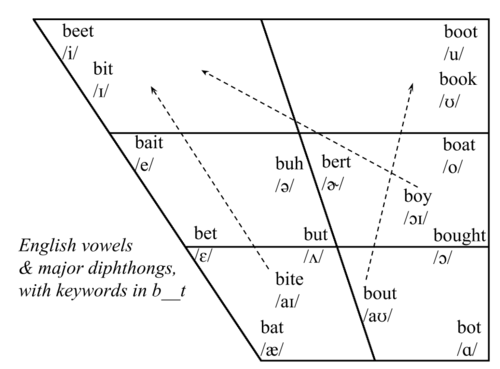
They’re arranged from most closed (“beet” and “boot”) to most open (“bat” and “bot”).
Simply take the song lyric that you’re trying to sing better and move up one vowel sound on the chart.
This will make the low notes easier to sing at low pitches.
For Example:
Let’s take a look at the example of Take Me To Church by Hozier.
Hozier is a Baritone, and sings some notes in his songs that are quite low for Tenors.
But remember, it’s important to train and stretch to hit those low notes as well as the high notes.
In the song, Hozier sings a D3 on the word “giggle” in the first verse.

When he sings “she’s a giggle at a funeral” he reaches way down on the word “giggle.”
For Hozier’s luxurious baritone voice, that’s not a problem.
But for someone with a higher voice (like me!), that low note can be quite a stretch.
So let’s apply what we’ve learned.
If the low note occurs on the vowel “ih” in “giggle”, let’s move up the vowel chart to the next narrowest vowel.
In this case, we’ll replace “giggle” with “geegle,” which uses the closed “ee” vowel.
Obviously, you won’t want to sing the song like this forever.
But if you practice the song while narrowing the vowels on the low notes, you’ll be able to switch back to the ‘correct’ vowels.
You’ll be amazed at how much fuller and richer your tone becomes on those low notes!
If you’re still a little confused, please check out my video demonstration below:
Conclusion

Congratulations! By now, you should know exactly where low notes come from and how to get them in your own voice.
Low notes can be challenging as far as singing techniques go, so serious props for sticking with these exercises.
Some students who have been working on low notes for a while ask me: can singing low notes damage your voice?
The risk isn’t in singing the low note per se, but in straining to hit notes too far beyond your range.
Your goal should be to expand your range and learn how to sing low notes without cracking or straining.
Like I said, I’ve had plenty of trouble with low notes in the past.
But if I can do it, so can you!
The key is constant, daily practice. I hope these exercises help you learn how to sing low notes louder and better.
No matter what, stay relaxed, keep your larynx balanced, and don’t push or strain your voice.
Do this and you’ll be singing full and powerful low notes in no time.
Feel free to check out my full Master Your Voice course for more tips and tricks on low notes, high notes, and everything in between.
For both beginning and advanced vocalists looking for guidance on how to sing low notes for singers, remember that patience and proper technique are key.
If you’re specifically working on how to sing low notes better, focus on maintaining proper breath support while keeping your larynx neutral.
The most successful singers combine these exercises with regular practice and professional guidance to achieve their goals.
Want to Nail Those High Notes?
Every singer wants to expand their range. Expand Your Range Fast will show you how to finally hit high notes in your voice without straining. Expand your range by 5 notes or more!


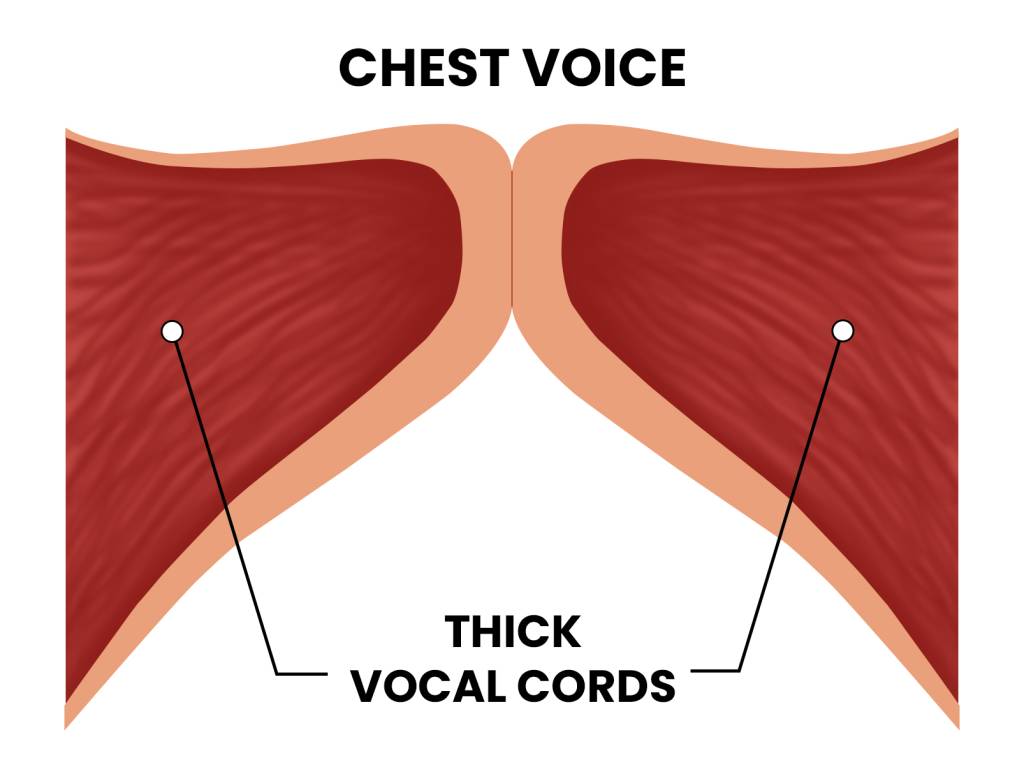
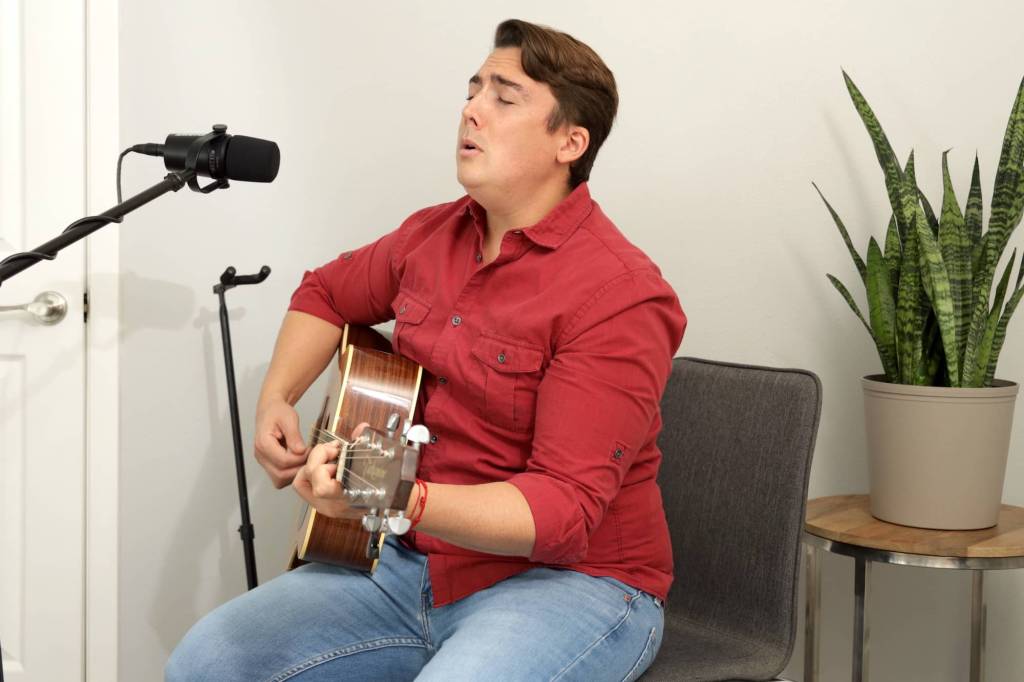


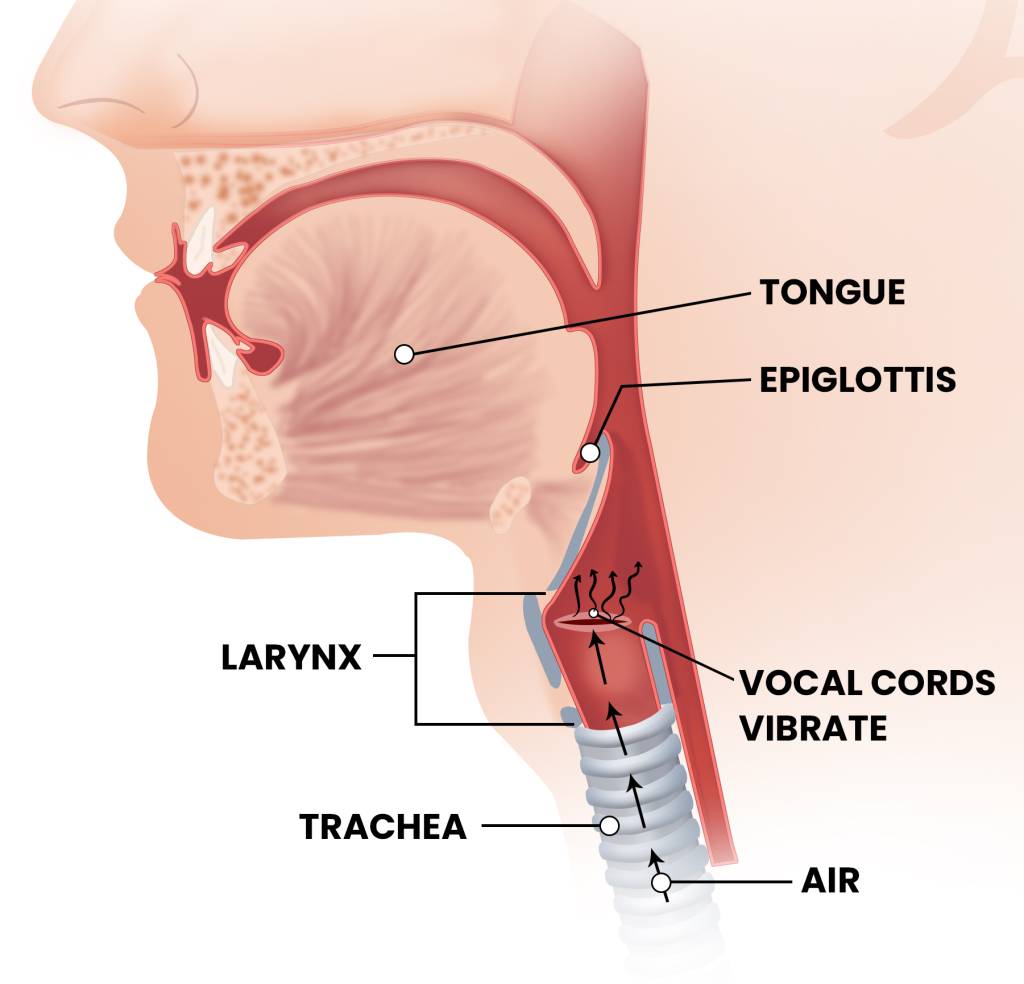
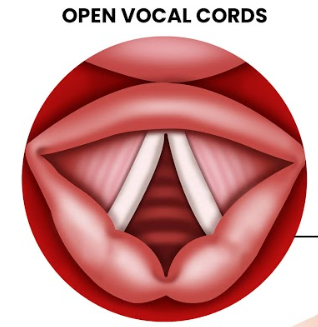

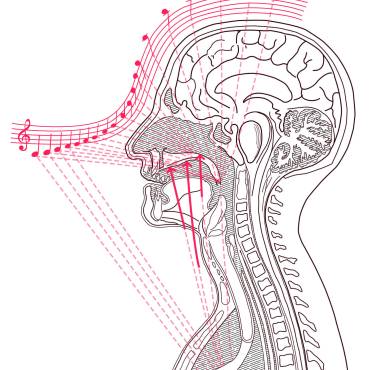

41 Comments
Great Stuff! Thanks
You’re very welcome David!
omg lovee
Thanks briaany!
hi matt ramsey
Hey Gemma!
hi i really wanna know the stuff to do with your body when u sing after u know ur straight posture do u like hold ur throat or sum like what else can u do phsicaly to help ur sining?
Hey Sophia, having a big of trouble reading this. My guess is that you want to know what to do with your body when singing low notes?
You’ll want to keep a relaxed head position, where you keep your gaze forward and your chest comfortably lifted.
The temptation is to lower your chin for low notes. Try to avoid that!
i like how you sing
Thank you Latanya!
wow that’s good I guess I’m learning how to sing hehe
Absolutely!
Yep
Hi guys
ok so my voice when i sing is really high i can hit some low notes but im soprano
That’s awesome Faith! It’s important that you continue working on both the low and high notes.
ok i will work on them thank you so much
You’re very welcome!
My voice is naturally low. I lost my incredibly high falsetto decades ago probably due to lack of practice? Is there a way to get a richer, more resonant low tone?
Yes George, just follow these exercises!
I just started to sing and i think this is a very good one!
Thank you Lee!
its soooo coool i cant wait to start my singing lesees but see ya gtg
Way to go!
I’m still work on it but, it’s amAzing
Nice! Way to go!
Ive tryed singing low but for some reason when i try it turnS out im really just Talking in the lowest voice i can ??BUT WHY??
Hey Lillian, it’s great to start off by “speaking” those low notes first. That will help you get down to them. Then, you can try to make them sound more sung.
hi, I try my best to sing can you help me.
Of course Cat, these exercises will definitely help you!
Hey matt, Im 15 and have a deep voice (Or so ive been told) and was wondering if this is applicable to deeper voices to get deeper or is just for the Higher voices. If it helps at all i can hit a b2 to an d4 (I somehow hit a B1 once, but never again)
Yes, all this is applicable for different voice types (including lower ones).
Heya!
i just want to be able to sing the bass part of wellerman….
Keep practicing!
omg, i came here because I wanted to sing take me to church. I am an alto and I’ve pretty much nailed the song. was just looking for some tips to make it smoother. this helped a lot. one thing I’ve learned is to keep your low notes high, if that makes any sense. to Speak the low notes in your head and not in your chest. again, thanks for the article
You’re so welcome Jasy!
Funnily enough, while reading this, I was practicing along with the intent to sing Take Me to Church and hitting that low note on “giggle”… Lo and behold, it’s right there in the article lol. After watching some of your videos I’ve discovered I’m a contralto but most of the songs I like to sing have just a few notes that are sliiiiiightly out of my range on the lower end, so being able to hit those would really be perfect, and subbing that “ih” sound for the “ee” really did work! So cool. Thanks for all the resources you put out!
That’s awesome S! So glad you found it helpful!
Hi, matt I just watched the video and it was really helpful.. My only issue is being able to control the dropping of y larynx. How should I go about that?
Hey Myra, learning to sing low notes without dropping the larynx too much takes time. If you haven’t yet, check out this video for more: https://www.youtube.com/watch?v=xRSdOnuOCns